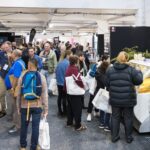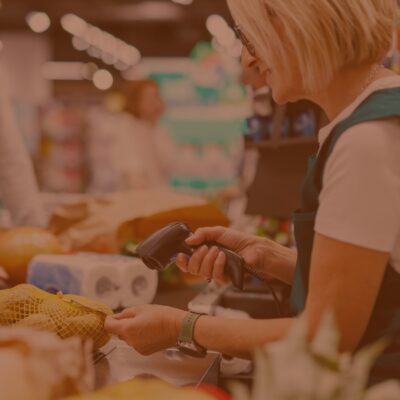Bringing New Zealand tourism to the world
Michael Nees is encouraging the tourism industry and other sectors to use digital technology to meet the demand for visitor experiences in Aotearoa New Zealand. There’s no doubt the travel […]
Michael Nees is encouraging the tourism industry and other sectors to use digital technology to meet the demand for visitor experiences in Aotearoa New Zealand.
There’s no doubt the travel industry is permanently changed as a result of COVID-19, and it’s not just a matter of waiting for things to revert to ‘normal’.
The cost of travel will change and it may be inaccessible for many, or something that people consider doing less frequently. More importantly, our environment demands that we rethink our travel habits and the impact of our travel on the world around us.
However, this does not mean that engaging with wonderful experiences in other places is no longer possible.
Michael Nees of Virtual Journeys (pictured below) is playing a leading role in encouraging the tourism industry and other sectors to use digital innovations and technology to meet the high demand for visitor experiences in Aotearoa New Zealand. His aim is to use virtual reality, augmented reality, and online experience technology to achieve this.
Michael has created the first three of 10 pilot visitor virtual reality tour experiences including kayaking, an ecotour in the Abel Tasman National Park and a Nelson Tasman vineyard tour. This came at no charge to the operators in order to showcase what can be offered. Now, he is looking for more tourism operators who would like to set up virtual tour and travel experiences.
Michael says that he is excited by the global visitor appetite for such digital activities and already knows some people outside the traditional visitor sector areas who are capitalising on the promising revenue stream virtual tourism provides.
“One hobby farmer, Arthur Chin, has attracted thousands of paying visitors from around the world for his farm tours,” says Michael. “At $22 per person or $645 per private group to register, and with more than 9,000 paying customers having taken his tour since May 2020, this is a fantastic addition to his income. On one weekend in June alone he had 4,000 people on a tour organised via Singapore Tourism.”
Michael says that with more than 171 million virtual reality users currently worldwide and the consumer demand for virtual reality devices growing exponentially as the price point for devices comes down, New Zealand businesses, and the New Zealand tourism industry in particular, needs to engage meaningfully with this global multi-billion dollar market now.
Michael believes that while there will always be an important place for in-person tourism, now is the time to fully explore what we can achieve by engaging with visitors without the need for a long-haul flight – except in someone’s imagination.
“Virtual reality technology has the ability to transform our economy in the same way that the advent of the Internet did.”
“Virtual reality technology has the ability to transform our economy in the same way that the advent of the Internet did. When the Internet came along I jumped onto it and this feels the same for me. Early adopters of this technology will reap the benefits and it’s important that New Zealand doesn’t get left behind, especially given our distance from visitor markets.
“At this month’s Nelson Tasman Chamber of Commerce ASPIRE conference Minister of Tourism Stuart Nash mentioned the importance of the digital sector to tourism recovery post-COVID, and that was encouraging to hear,” says Michael. “But we really need the Government and tourism bodies such as Tourism NZ to really engage with virtual reality and other such technology to capitalise on the benefits it can provide for our hard-hit tourism sector. It’s not an either/or situation for real life and virtual tourism – both can work together for the benefit of New Zealand tourism.”
Michael says that in addition to its potential uses for tourism experiences, virtual reality is already utilised in a number of other industries, and has been since the early 2000s.
“In the USA in particular it has been used for health treatments, for example to provide pain relief for burn victims to and to assist with post-traumatic stress disorder, and as part of counselling for survivors of 9/11. It has also been used in a range of sporting codes for training and fan engagement since 2015.
“There is an enormous opportunity to use virtual reality, augmented reality and online technologies to benefit human society. Just as an example, businesses in a wide range of industries could immerse viewers in scenarios that demonstrate what can happen if we don’t reduce our carbon emissions.”
Getting over the hurdles
Michael says that some of the biggest hurdles in the past were the headset size and the cost of purchasing it and the quality of content available.
“Some of those obstacles have been dealt with or will be addressed over the coming years, in the same way as technology for fax machines, the Internet, and mobile phones developed rapidly.
“Over time the hardware will get smaller and more powerful. Leading global players such as Facebook, Google, and Apple are working on this. One day a virtual reality or augmented reality headset will be the size of standard sunglasses or even as small as contact lenses!”
The rollout of the new 5G networks throughout the world is a fundamental ‘game changer’, says Michael, and creates many opportunities for virtual reality and online experiences due to it being much quicker to handle larger file sizes.
New Zealand also benefits from having leading virtual reality and augmented reality scientists living here, such as Professor Mark Billinghurst who is at Auckland University.
“Their research is helping us to gain a deeper understanding the impact of these technologies. After all we are just at the beginning of understand the possibilities for immersive, digital technologies.
“Meanwhile seeing is believing and as the use of immersive virtual reality technologies increases, our understanding and use of this next generation, innovative tool will develop.
Michael encourages business, government, and scientists to work together to create a new area of digital innovation for New Zealand.
“We are at the beginning of an exciting development that will benefit the human race, the natural environment, and the tourism industry.”
Go to https://virtualjourneys.co.nz/ for more information.
Main photo: Rohan Haskell of R & R Kayaks (left) and Michael Nees during filming of a Virtual Journeys pilot 360-degree virtual tourism experience in the Abel Tasman National Park.






